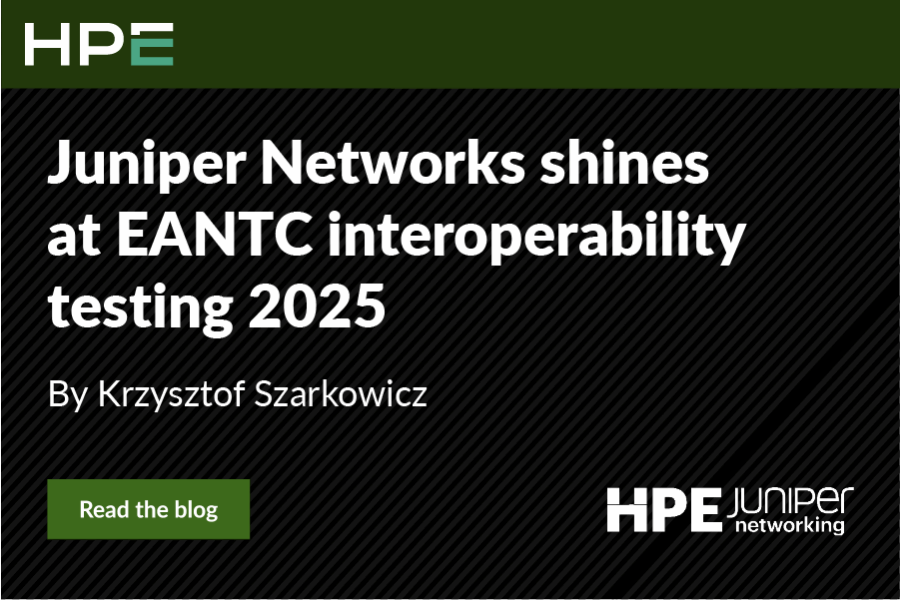What if the best network engineer left? What if the most knowledgeable person, who designed and built the network, making them a single source of truth, left?
Losing the most talented network engineers also means losing the single source of truth. Recruiting, onboarding and training new engineers to re-build often requires a tremendous amount of time and effort.
What’s the issue?
Today, that single source of truth of the network is largely in the mind of the engineers. During the COVID-19 pandemic, large numbers of employees resigned across industries to look for a new challenge, try out a new environment, improve their work life balance or simply look for higher pay. On top of supply chain issues, The Great Resignation and its associated talent shortages have forced leaders to truly think outside the box and re-evaluate their strategy to maintain an efficient workforce.
The solution.
Make everyone in the team a rock star by taking the single source of truth out of the mind of a few engineers and putting it into the hands of many with a new tool that provides guardrails and templates, automated assurance, self-documentation and validation. Most importantly, give them a tool that is easy to learn and can be used across all hardware vendors.
If the era of Software Defined Networking (SDN) taught us anything, it’s that there is value in centralizing the operational touch point of the network. Not only is it simpler to manage a network from a central point but it also gives us a logical place to build that single source of truth tool. What SDN also reminded us is that a distributed network is still the best way to build high performing resilient networks. So, we need to centralize the operational touch point so that we can simplify operations and build the single source of truth, while continuing to leverage the distributed nature of networking technology.
What can IT do?
Simplify IT: Leaders should choose solutions that provide repeatable designs and architectures that any network operator of any background and seniority can easily learn and use. Leverage intent-based networking and automation to design, build, deploy and operate services quickly and reliably to keep up with the pace of business needs and innovation.
Rethink operations: Even more important than automation and speed is reliability. Speed is meaningless if the wrong path is being taken. Automation can be dangerous if automated configurations are not validated. IT leaders should choose tools that enable repeatable operations, that provide for speed and automation, and do so while validating changes along the way. These tools should also provide the capability to rapidly roll back if a change does manage to get made in error. Tools like this empower the entire team to be “rock stars,” and not be slowed down if one of the experts resigns.
Re-examine technology requirements: Staff shortage and supply chain issues have made vendor lock-in problems more evident than ever. It’s time to question the status quo and realize that businesses should have the flexibility to choose vendors based on innovation, merits and availability. The most difficult hurdle for any IT team is to train and retain talent that can manage the different vendor technologies. Finding an engineer that is fluent in every vendor’s CLI is nearly impossible. So, IT leaders can dramatically boost their IT team performance and Time to Market by choosing a tool that abstracts the complexity of specific vendor implementations; one tool to rule them all.
Adopt the modern data center: IT leaders need to adopt an architecture that provides performance and reliability, that is automatable and can be deployed in “cookie-cutter” building blocks for simplicity at any scale. Modern architecture must be based on open standards to allow for the multivendor strategy. It makes your engineers more effective by being simpler to manage and troubleshoot. Proprietary architectures and protocols are not acceptable as they lock you in and rarely provide added functionality over open standards.
All the above is achievable:
Juniper Networks is a leader in modern data center architectures, leveraging open standards such as EVPN/VXLAN to build scalable and resilient data center fabrics. And, because we leverage these open standards, we can operate in a multivendor environment without locking you in.
Additionally, Juniper Apstra is the only multivendor-capable intent-based networking tool on the market. Apstra provides all the operational tools required to design, build, deploy and operate the modern data center fabric from Day 0 to Day 2 plus. Apstra is the tool that enables IT teams to get the Single Source of Truth out of the mind of the engineer and into a repeatable process that survives “The Great Resignation.”
Resources:
On Demand Webinar: Tips for Data Center Operators to Successfully Navigate The Great Resignation

























